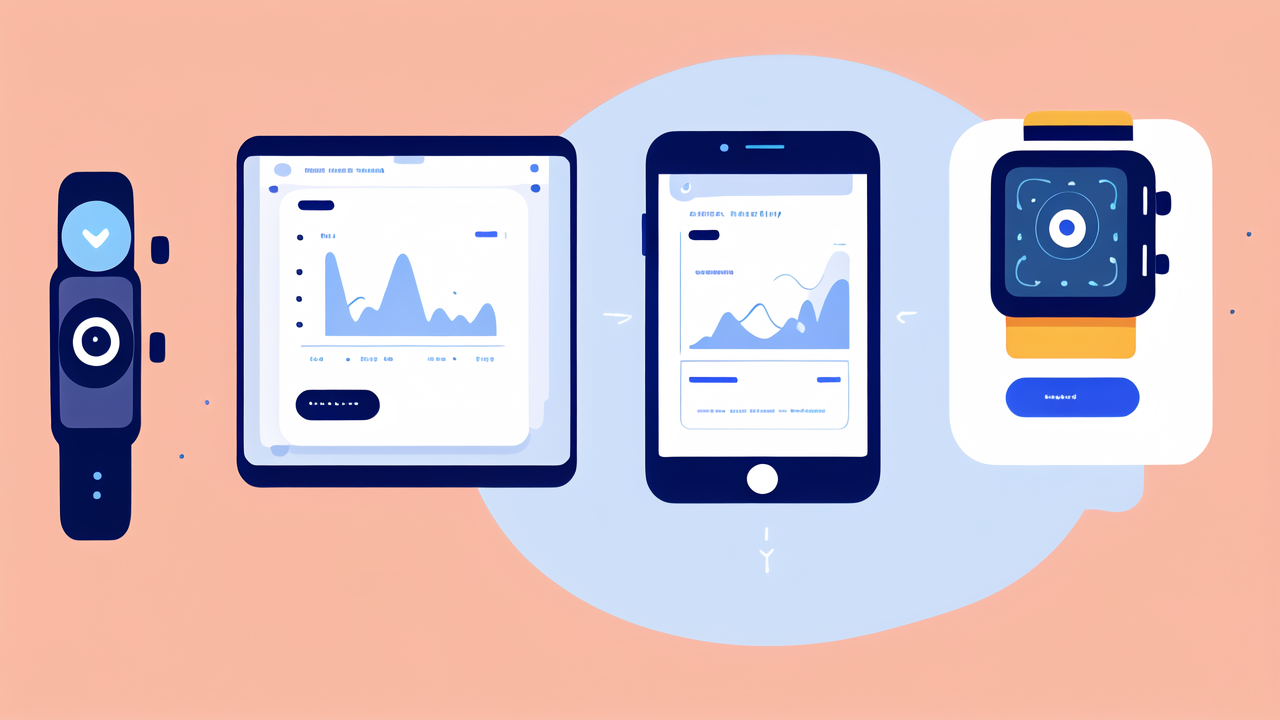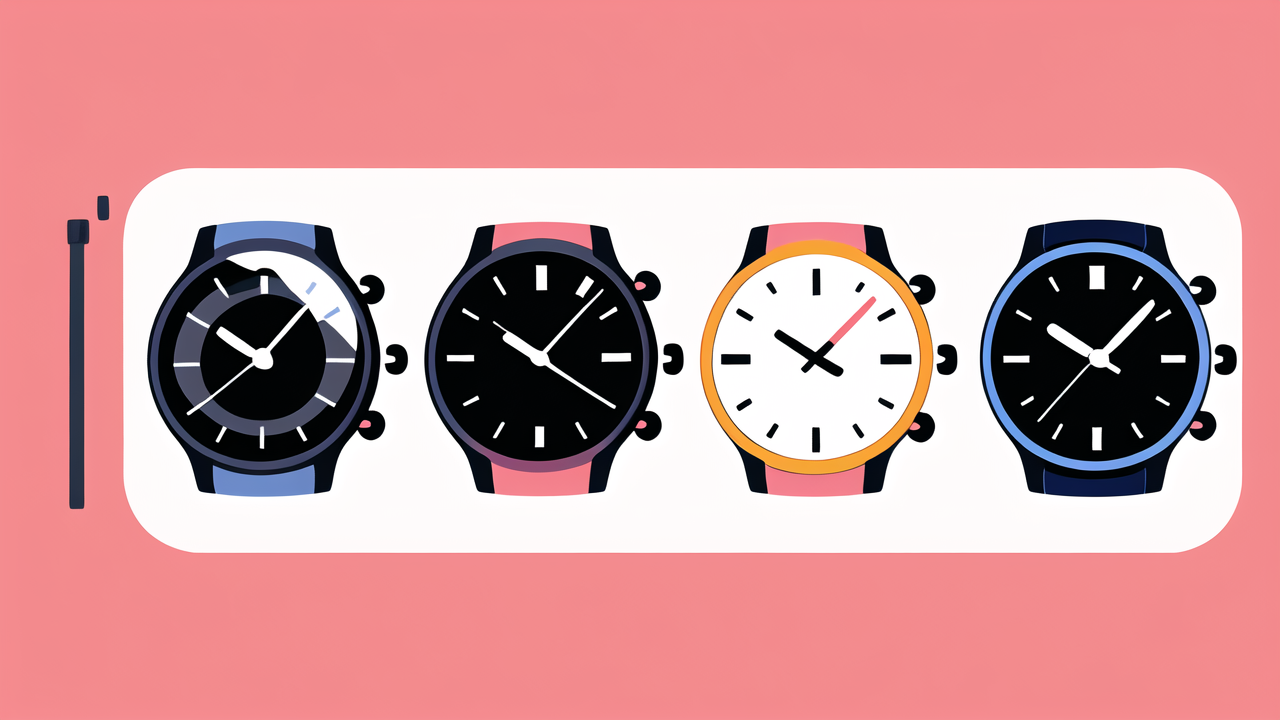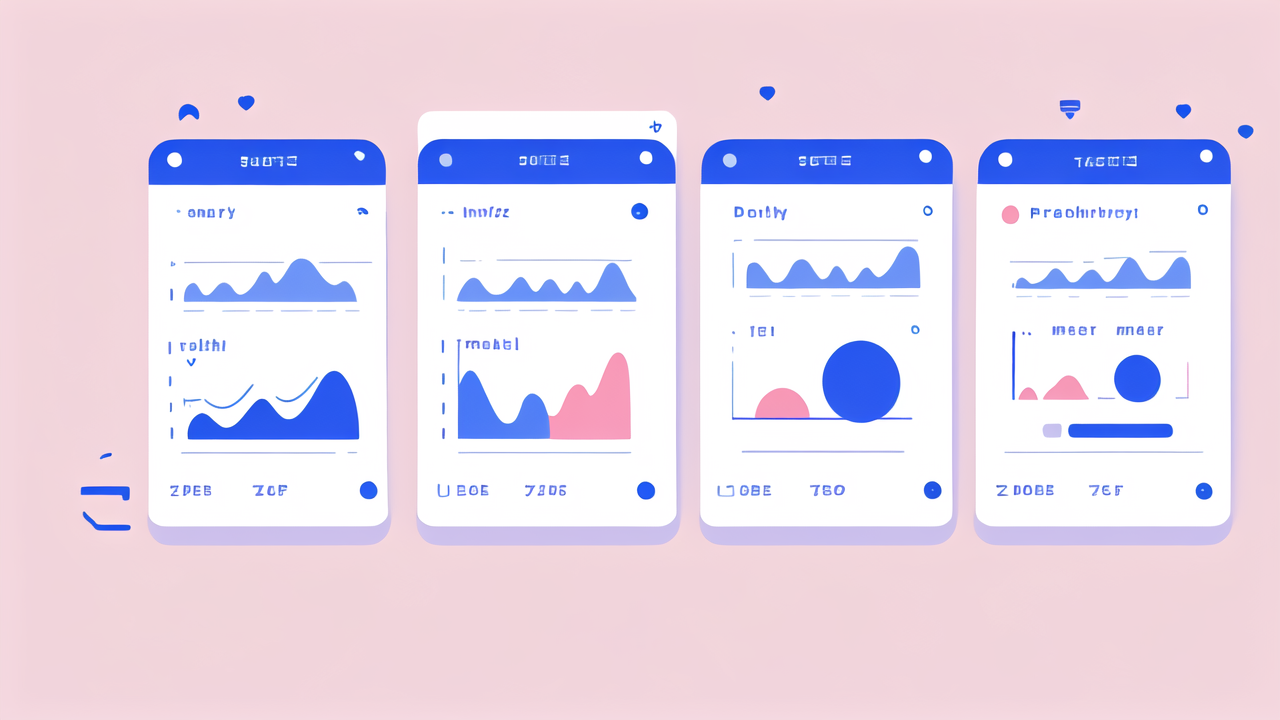Understanding the Differences: The Evolution of Digital Watches in the United States
The origins of digital watches: A timeline
Digital watches have come a long way since their inception. In the 1970s, they revolutionized timekeeping. The first digital watch, the Pulsar, debuted in 1972. It used LED display technology. Hamilton Watch Company introduced it to the market.

By the 1980s, LCD displays became popular. They offered better battery life. Casio's G-Shock series, launched in 1983, set new durability standards. It became a cultural icon.
The 1990s saw the integration of more features. Altimeters, barometers, and compasses became common. Timex's Ironman series gained popularity among athletes.
In the 2000s, solar-powered digital watches emerged. They offered eco-friendly timekeeping solutions. Citizen's Eco-Drive technology led this trend.
Key features that set digital watches apart from smartwatches
Digital watches have unique features that distinguish them from smartwatches. Here are some key differences:
- Battery life: Digital watches often last years on a single battery.
- Durability: Many digital watches are built to withstand extreme conditions.
- Simplicity: They focus on core timekeeping functions without complex interfaces.
- Affordability: Generally, digital watches are more budget-friendly.
- No charging required: Unlike smartwatches, most digital watches don't need daily charging.
- Always-on display: The time is always visible without waking the device.
- Water resistance: Many digital watches offer superior water resistance.
These features make digital watches appealing to many users. They value reliability and simplicity over advanced features.
The role of GPS and connectivity in modern digital watches
GPS and connectivity have transformed modern digital watches. Many now offer advanced tracking features. These are especially popular among outdoor enthusiasts and athletes.
GPS-enabled digital watches provide accurate location data. They can track routes, measure distances, and provide navigation. This is useful for hikers, runners, and cyclists.
Some digital watches now offer limited connectivity. They can sync with smartphones for data transfer. This allows users to analyze their activities in detail.
However, these features are typically less advanced than in smartwatches. They focus on specific functions rather than broad connectivity. This approach maintains the simplicity and long battery life of digital watches.
Analyzing Consumer Preferences: Market Trends for Digital Watches and Smartwatches
Digital watches: Popularity among fitness enthusiasts and outdoorsmen
Digital watches remain popular among fitness enthusiasts and outdoorsmen. Several factors contribute to this trend:

- Durability: They can withstand harsh conditions and impacts.
- Long battery life: Ideal for extended outdoor activities.
- Simplicity: Easy to use during workouts or outdoor adventures.
- Specific features: Many offer specialized functions like altimeters and compasses.
- Water resistance: Suitable for water sports and wet conditions.
- Reliability: They work consistently without needing frequent charging.
- Affordability: Often more budget-friendly than advanced smartwatches.
Brands like Casio G-Shock and Garmin are favorites in this market. They offer rugged designs and sport-specific features. These watches cater to the needs of athletes and outdoor enthusiasts effectively.
Smartwatch adoption: Trends among tech professionals and lifestyle users
Smartwatches have gained popularity among tech professionals and lifestyle users. Several trends are driving this adoption:
- Connectivity: They offer seamless integration with smartphones and other devices.
- Health tracking: Advanced sensors monitor various health metrics.
- Customization: Users can personalize watch faces and apps.
- Notifications: They provide quick access to messages and alerts.
- Voice assistants: Many smartwatches include AI assistants like Siri or Google Assistant.
- Contactless payments: Some models support mobile payments.
- App ecosystem: A wide range of apps extend functionality.
Apple Watch and Samsung Galaxy Watch are leading brands in this segment. They appeal to users who value connectivity and advanced features. The smartwatch market continues to grow as technology improves.
The impact of brand loyalty on market share
Brand loyalty plays a significant role in the watch market. It influences both digital and smartwatch segments. Here's how it impacts market share:
- Established brands: Companies like Casio and Timex have loyal digital watch customers.
- Ecosystem lock-in: Apple Watch users often stick with the brand due to iOS integration.
- Feature familiarity: Users become accustomed to specific interfaces and features.
- Trust in durability: Brands known for toughness, like G-Shock, retain customers.
- Style preferences: Some brands are favored for their design aesthetics.
- Customer service: Good after-sales support encourages brand loyalty.
- New product anticipation: Loyal customers often wait for new models from their preferred brand.
Brand loyalty can make it challenging for new entrants to gain market share. Established brands have an advantage in retaining customers and attracting new ones.
Future-Proofing Your Gadget: What's Next for Digital Watches and Smartwatches?
Innovations in digital watch technology: Predictions and trends
Digital watch technology continues to evolve. Here are some predictions and trends:

- Improved battery life: New power-saving technologies may extend battery life further.
- Enhanced durability: More robust materials and designs for extreme conditions.
- Advanced sensors: Integration of more accurate and diverse sensors.
- Solar charging: Wider adoption of solar-powered technology.
- E-ink displays: Potential use of e-ink for better visibility and power efficiency.
- Hybrid designs: Combining traditional watch aesthetics with digital features.
- Eco-friendly materials: Increased use of sustainable and recyclable materials.
These innovations aim to enhance the strengths of digital watches. They focus on reliability, durability, and specific functionalities. The goal is to maintain their appeal in a smartwatch-dominated market.
The rise of smartwatches in the digital eco-system
Smartwatches are becoming increasingly integrated into the digital ecosystem. This trend is likely to continue:
- IoT integration: Smartwatches may become central hubs for IoT devices.
- Enhanced health monitoring: More advanced sensors for comprehensive health tracking.
- Improved battery life: New technologies may extend smartwatch battery performance.
- 5G connectivity: Direct cellular connectivity for standalone functionality.
- Augmented reality features: Potential for AR applications through smartwatches.
- Improved voice control: More advanced voice recognition and control capabilities.
- Flexible displays: Potential for larger, wrap-around screens.
These advancements aim to make smartwatches more versatile and independent. They may reduce reliance on smartphones for many functions.
Integrating AI and Machine Learning: The future of wearable technology
AI and machine learning are set to transform wearable technology:
- Personalized health insights: AI could provide more accurate health recommendations.
- Predictive maintenance: ML could anticipate device issues before they occur.
- Advanced voice assistants: More natural and context-aware voice interactions.
- Gesture recognition: Improved control through hand and arm movements.
- Emotion detection: Potential for watches to recognize and respond to user emotions.
- Adaptive interfaces: UI that changes based on user behavior and preferences.
- Enhanced security: AI-powered biometric authentication methods.
These technologies could make wearables more intuitive and personalized. They may offer more value by providing deeper insights and smarter interactions.




Leave a comment
This site is protected by hCaptcha and the hCaptcha Privacy Policy and Terms of Service apply.